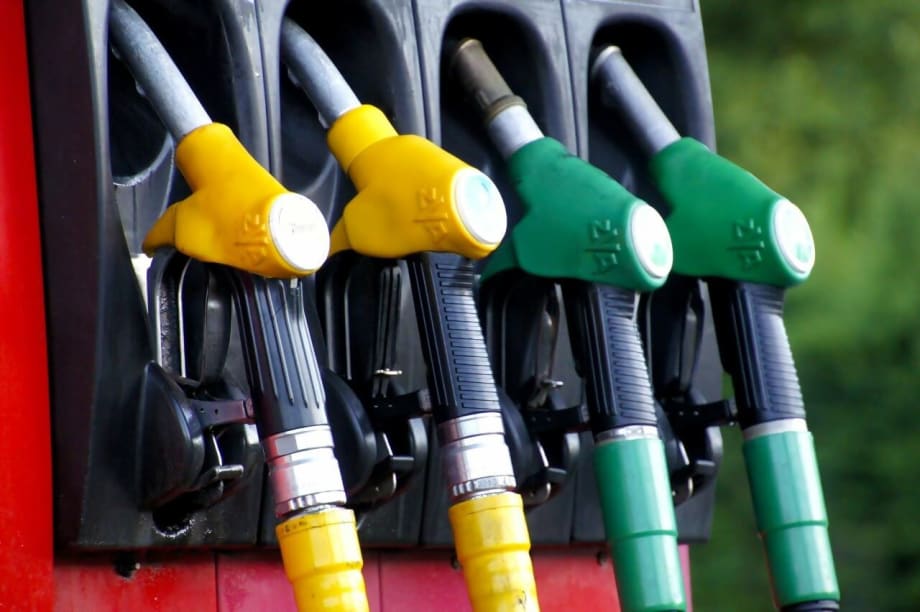Advisory Fuel Rates 2022 For Company Cars
If company cars are a part of your work or business, then you need to know about advisory fuel rates. Advisory fuel rates are a tax charged by the government on all company cars and if you drive one then you might have to pay it. To help you get up to speed, we’ve explained all the key details you need to know about advisory fuel rates below.
Manage advisory fuel rates and taxes easier with fuel cards. You can track all your company cars’ miles in the fuel card’s online account and save admin time and money on mileage claims.

What are advisory fuel rates for vehicles?
Advisory Fuel Rates (AFRs) are the rates set by the UK government to help businesses in reimbursing or being reimbursed for fuel costs of company cars.
This covers petrol, diesel, electric hybrid (these either pay the petrol or diesel rate), and electric cars.
There are two instances where government advisory fuel rates apply to company cars:
- To reimburse employees for any business travel in a company car that they’ve paid for.
- Allowing employees to repay the cost of the fuel used for personal trips in company cars.
While petrol, diesel, and hybrid cars have been required to pay advisory fuel rates for many years, advisory fuel rates were only introduced for electric cars on 1 September 2018.
Why have advisory fuel rates?
AFRs are in place to help companies stick to the rules surrounding tax and Class 1A National Insurance costs when it comes to fuel for company cars.
When reimbursing employees for fuel costs from a business trip, so long as a company pays for the expense at a rate no higher than the AFR for the car in question, they’re not required by HMRC to pay Class 1A National Insurance and it is also accepted that there is no taxable profit gained.
As a company, you have the right to use your own rate where a lower rate is required. For instance, if your company cars are proven to be more fuel efficient than the AFR suggests, you can choose to reimburse employees for an amount less than AFRs suggest.
It’s also possible to repay higher than the AFR. However, in this case you must demonstrate that the cost per mile was in fact higher than the guideline rate.
When an employee has to repay fuel costs for personal trips made in a company car, the price paid must be at the AFR or higher for HMRC to accept that there is no fuel benefit charge.
The AFR is not binding when you can prove that the amount paid by the employee covers the amount of personal fuel expense in full, even where it is less than the guideline rate.
iCompario tip:
When your employees use fuel cards, all the fuel they buy is listed in the card provider’s client portal. This means you have it all in one place. You don’t have to log your employees’ fuel receipts manually. While you can’t control the advisory fuel rates, you can submit your expenses easier.
Current advisory fuel rates
Advisory fuel rates are based on both the engine type and size of company cars. They are set by the UK government four times each year – on the first day of March, June, September, and December.
You can see the current government advisory fuel rates in the table below:
Current rates for petrol cars and other vehicles
| Engine size | Petrol – rate per mile |
| 1400cc or less | £0.14 |
| 1401cc to 2000cc | £0.17 |
| Over 2000cc | £0.25 |
Current rates for diesel cars and other vehicles
| Engine size | Diesel – rate per mile |
| 1600cc or less | £0.13 |
| 1601cc to 2000cc | £0.16 |
| Over 2000cc | £0.19 |
Current rates for LPG cars and other vehicles
| Engine size | LPG – rate per mile |
| 1400cc or less | £0.09 |
| 1401cc to 2000cc | £0.11 |
| Over 2000cc | £0.16 |
LPG stands for liquefied petroleum gas – also known as autogas.
Current rates for fully electric cars and other vehicles
| Engine size | Electric – rate per mile |
| All | £0.05 |
All the above figures are the rates from 1 June 2022.
It’s important to know that the advisory fuel rates for electric cars only apply to cars that are fully electric, so not hybrids.
An explanation of how advisory fuel rates are calculated

Credit: Pixabay
Like many government levies, the UK government provides an explanation of how advisory fuel rates are calculated. How does it do it? Quite simply, by using fuel prices.
It makes this calculation by using the following six fuel price data inputs:
- Engine size (cc)
- Mean miles per gallon
- Applied per gallon
- Fuel price (per litre)
- Fuel price (per gallon)
- Pence per mile
The tables below show you how advisory fuel rates are calculated by the UK government for the different fuels and the engine sizes of vehicles.
Engine size petrol cars and other vehicles
| Engine size (cc) | Mean MPG | Applied MPG | Fuel price (per litre) | Fuel price (per gallon) | Rate per mile | Advisory fuel rate |
| Up to 1400 | 54.2 | 52.7 | 165.1 pence | 750.5 pence | 14.2 pence | 14 pence |
| 1401 to 2000 | 46.1 | 44.9 | 165.1 pence | 750.5 pence | 16.7 pence | 17 pence |
| Over 2000 | 32.7 | 30.3 | 165.1 pence | 750.5 pence | 25.0 pence | 25 pence |
Engine size diesel cars and other vehicles
| Engine size (cc) | Mean MPG | Applied MPG | Fuel price (per litre) | Fuel price (per gallon) | Rate per mile | Advisory fuel rate |
| Up to 1600 | 65.4 | 63.6 | 179.7 pence | 816.8 pence | 12.8 pence | 13 pence |
| 1601 to 2000 | 57.9 | 53.4 | 179.7 pence | 816.8 pence | 15.9 pence | 16 pence |
| Over 2000 | 49.8 | 45.8 | 179.7 pence | 816.8 pence | 19.4 pence | 19 pence |
Engine size LPG cars and other vehicles
| Engine size (cc) | Mean MPG | Applied MPG | Fuel price (per litre) | Fuel price (per gallon) | Rate per mile | Advisory fuel rate |
| Up to 1400 | 43.3 | 42.2 | 86.8 pence | 394.6 pence | 9.4 pence | 9 pence |
| 1401 to 2000 | 36.9 | 35.9 | 86.8 pence | 394.6 pence | 11.0 pence | 11 pence |
| Over 2000 | 24.7 | 24.0 | 86.8 pence | 394.6 pence | 16.4 pence | 16 pence |
Engine size electric cars and other vehicles
The UK government doesn’t publish a table for electric cars and other vehicles.
Instead, official documentation on the government website explains that “the advisory electric rate for fully electric cars is calculated using electrical price data from the Department for Business, Energy and Industrial Strategy and electrical consumption rates from the Department for Transport”.
A list of the historical advisory fuel rates
Advisory fuel rates aren’t static – they are updated four times every year. The updates happen in March, June, September, and December.
To give you an idea of how much the advisory fuel rates change every quarter, we’ve included the previous rates from March 2021 to May 2022.
UK Government Fuel Rates From 1 March 2022 To 31 May 2022
| Engine size | Petrol | Diesel | LPG | Electric |
| 1400cc or lower | £0.13 | N/A | £0.08 | £0.05 |
| 1600cc or lower | N/A | £0.11 | N/A | £0.05 |
| 1401cc – 2000cc | £0.15 | N/A | £0.10 | £0.05 |
| 1601cc – 2000cc | N/A | £0.13 | N/A | £0.05 |
| More than 2000cc | £0.22 | £0.16 | £0.15 | £0.05 |
UK Government Fuel Rates From 1 December 2021 To 28 February 2022
| Engine size | Petrol | Diesel | LPG | Electric |
| 1400cc or lower | £0.13 | N/A | £0.09 | £0.05 |
| 1600cc or lower | N/A | £0.11 | N/A | £0.05 |
| 1401cc – 2000cc | £0.15 | N/A | £0.10 | £0.05 |
| 1601cc – 2000cc | N/A | £0.13 | N/A | £0.05 |
| More than 2000cc | £0.22 | £0.15 | £0.16 | £0.05 |
UK Government Fuel Rates From 1 September 2021 To 30 November 2021
| Engine size | Petrol | Diesel | LPG | Electric |
| 1400cc or lower | £0.12 | N/A | £0.07 | £0.04 |
| 1600cc or lower | N/A | £0.10 | N/A | £0.04 |
| 1401cc – 2000cc | £0.14 | N/A | £0.08 | £0.04 |
| 1601cc – 2000cc | N/A | £0.12 | N/A | £0.04 |
| More than 2000cc | £0.20 | £0.15 | £0.12 | £0.04 |
UK Government Fuel Rates From 1 June 2021 To 31 August 2021
| Engine size | Petrol | Diesel | LPG | Electric |
| 1400cc or lower | £0.11 | N/A | £0.08 | £0.04 |
| 1600cc or lower | N/A | £0.09 | N/A | £0.04 |
| 1401cc – 2000cc | £0.13 | N/A | £0.09 | £0.04 |
| 1601cc – 2000cc | N/A | £0.11 | N/A | £0.04 |
| More than 2000cc | £0.19 | £0.13 | £0.14 | £0.04 |
UK Government Fuel Rates From 1 March 2021 To 31 May 2021
| Engine size | Petrol | Diesel | LPG | Electric |
| 1400cc or lower | £0.10 | N/A | £0.07 | £0.04 |
| 1600cc or lower | N/A | £0.09 | N/A | £0.04 |
| 1401cc – 2000cc | £0.12 | N/A | £0.08 | £0.04 |
| 1601cc – 2000cc | N/A | £0.11 | N/A | £0.04 |
| More than 2000cc | £0.18 | £0.12 | £0.12 | £0.04 |
Compare fuel cards for company cars
Having fuel cards can save your business money, do your driver fuel expenses claims automatically and make it a 30-second job to reclaim your fuel VAT. Read all about the benefits of fuel cards.
As a free comparison site, iCompario can find you offers on cards from all the big oil companies or multi-brand cards, and deals with no minimum purchase or tie-in contracts.
Sources and References
More information about advisory fuel rates can be found on the UK government website.



